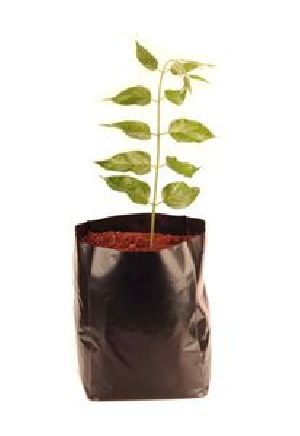
UV treated Grow Bags
These are UV treated plastic grow bags for green house cultivation, soil less farming, as well as for home gardening,nurseries, industrial gardening and organic production. Grow bags are another container solution that can be economically sound for grower.These are UV treated plastic grow bags used for green house cultivation, soil less farming, as well as for home gardening, nurseries, industrial gardening and organic production.UV treatment gives UV salability for use in outdoor conditions and repetitive use with 3 years manufacturer’s warrantee.Growing vegetables or flowers in growing bags isn’t all that different from growing them in other types of containers but you do need to bear in mind the lack of drainage holes, so if you are too heavy handed with the watering you will end up with a marshy mess.These Grow bags are light weight and can hold more soil required for better growth of plants. They can also move easily one place to another a very good solution for heavy clay pots.Suitable for growing all types of Vegetable, fruits and flower plants. Vegetables like Beans, Pumpkin, cucumber, Eggplant(Aubergine, Brinjal), tomato, capsicum, Okra, Bitter gourd, Snake gourd, Cabbage, Cauliflower can grow very effectively.
...more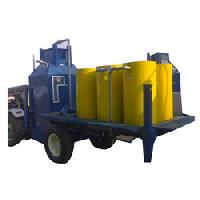
turmeric boiler

Sports Cotton Socks
We are engaged in offering Sports Cotton Socks to customers spread across the globe. The Cotton Sports Socks provided by us are manufactured using Cotton fabric and are cushioned in order to give arch support to the player. Besides, clients can avail Cotton Sports Socks at the most discounted prices. Salient Features Moisture absorbent Skin Friendly Perfect finishing Soft fabric Comfortable for the wearer Available In Varied Sizes Colors
...more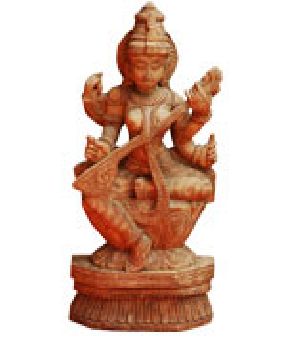
Sculptures
The three dimensional object created out of a non living material like metal or concrete is known as sculpture. It is usually a representation of a figure or an abstract expression. It is an ancient form of art that was used for carving out massive temples, deities and figurines that today are the cultural heritage. In our country, sculptures are a part of every Indian, be it either in the form of idols whom we worship or a show piece adorning the living room. Sculptures can be in the form of a bust, statue or architectural relief as seen in the centuries old monuments all around the country. Indian sculptures are diverse and of a variety of types. Here is a brief overview of the types of sculptures in India: Types of Indian Sculptures Wooden Sculptures – The bark of trees like Neem, Redwood and Cedar are used as carving material. These wooden sculptures are famous in heavily forested regions of India like Himachal Pradesh, Assam, Gujarat and Kerala. These are made by the subtractive method. Marble Sculptures – Another fine example of the subtractive method, marble sculptures are famous in the states of Rajasthan and Uttar Pradesh. Marble is well known as a weather resistant material and so, sculptures made of marble are popular handicrafts in India.Stone Sculptures – Stone as a sculpting material has been used from the prehistoric times. Rock cut sculptures are nothing but stone sculptures. Sandstone, Limestone, Marble and Granite are popular stones that have been in use since centuries. The technique used is subtractive. India not only has statues made of stone, there are a number of monuments all around the country that has relief sculptures like in the Khajuraho Temples, Sun Temple in Konark, Vittala Temple in Hampi, Mahabalipuram and Varaha Cave Temples.Terracota Sculptures – Terracota is one of the oldest materials used for sculpting. Literally meaning baked earth in Italian, this is basically porous clay that is molded, fired in a kiln and subsequently cooled and colored. Being easily available, re-usable and lower priced, sculptors today extensively use it all around India and the world. This is one of the best known examples of additive sculptures.Metal Sculptures – Metal in its alloy form has properties of strength, being easily moldable and ductility that make it a well known material for casting sculptures. Bronze is an alloy of copper and tin, and it can be made into a sculpture using processes like sand casting and lost-wax casting. Bronze sculptures made in South India between the 9th and 13th centuries are world renowned. Other sculpting alloys are brass, bell metal and steel. Metals like zinc, copper, iron, nickel and silver are also used for making sculptures either alone or alloyed with another one or more metals. Sculptures made by metal represent the additive method. Indian Sculptures down the Ages Sculpture in India is as old as civilization itself. The first sculptures were found during the excavations in Mohenjodaro, in the present Pakistan. These were dated between 2,500 and 1,500 BC. These sculptures not only helped gather more information about the culture prevalent in those times, it also showed the sculpting technical knowledge that the Indian subcontinent had such a long time ago. Through the centuries, sculptures became more expressive and definite. Here is a brief overview of the evolution and history of sculpture in India: Indus Valley Sculptures - After the stone carved Bust of a Nobleman and bronze casted Dancing Girl in the Indus Valley Civilization, came the era when Buddhism was propagated around 1st to 3rd century BC. Teachings of Lord Buddha were the main theme for sculptures during this time. The rulers of the Mauryan and Kushana Empires built stupas and pillars to spread the concepts of humanity, morality and non violence. The popular sculpting elements were animals, nature, Yakshis or a representation of the symbol of fertility, and Jataka stories that are about Buddha’s earlier lives. The Ashokan Pillar, Sanchi Stupa and Bodhi Tree of Barhut are famous sculptures of this time.Gupta Age of Sculptures - In the 14th century came the era, which is dubbed as the Classical period for Art including sculptures. With the establishment of the Gupta Empire, all the 3 main religions – Hindu, Buddhist and Jain, gained impetus to explore more in sculpturing. During this time, figures got more importance than nature. Statues of gods and goddesses were sculpted from stone and sandstone. Several schools of sculpture came up including Mathura School and Gandhara School, which emphasized on a particular style of look and sculpture-work. Figures were more intricately carved to depict emotion and beauty. Well known sculptures of the period between the 4th and 6th centuries were the red sandstone Buddha in Mathura, Sheshashayi Vishnu at the Deogarh Temple and the standing Buddha at Sarnath.Medieval Age of Sculptures - During the medieval age, sculptures became more ornamented rather than pious and simplistic, which was typical of the last age. Kingdoms all across the country contributed to Indian sculpture in a number of ways. Rulers in regions of the present Rajasthan, Gujarat, Orissa, Tamil Nadu, Karnataka and Andhra Pradesh built palaces, temples and other monuments and adorned them with small to big sculptures. Most of these had religious themes. Many of them were idols of Hindu Gods and Goddesses like the bronze Nataraja made in the Chola Dynasty. The temples were also sculpted to create pop-out images (relief sculptures) depicting the life of gods and goddesses like the Briheshwara Temple, granite sculptures in the Mahabalipuram temples and the Sun Temple in Konark.Modern Age of Sculptures - After the advent of Muslim rulers, architecture was given more importance than sculptures and therefore, the golden period of sculptures came to an end. During the British era, Indian sculpture got the first taste of western sculpture styles. The Bengal School of Art was a major school for sculptures patronized by the Tagore family. The early 20th century brought about a new age in Indian sculpture – the Contemporary or Modern era. This era includes the present times. Contemporary Sculptures in India are influenced by the western concepts of pseudo-realism, minimalism and abstract expressionism. Famous sculptors of the modern era include Debiprasad Roy Chowdhury, Satish Gujral, Ramkinkar Baij, Raghav Kaneria, Pradosh Dasgupta, K.G. Subramanyan, and Sankho Chaudhuri. Regardless of the modern influences there are a number of tribesmen in India, who have kept their sculpture true to the Indian aesthetics. The Bastar, Gadwaa, and Naga tribals are noted for their sculpture-works.
...more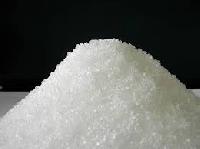
pure sugar
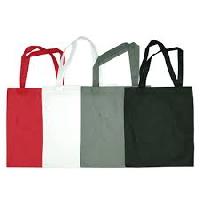
Non Woven Carrier Bag
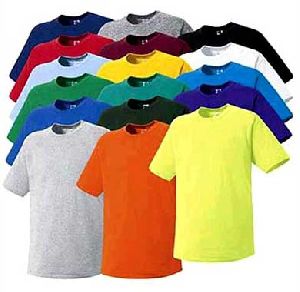
Mens Round Neck T-shirts
The Men’s Round Neck T-Shirts we offer have been liked by the customers all across the globe. Our Round Neck T-shirts are made using 100% cotton fabric. These Men’s Round Neck Cotton T-shirts are designed as per international fashion trends. Attributes Elegant designing Comfortable to wear Shrink resistant Color fast Extremely fine finishing Available In Various Sizes Colors
...more
Mens Mercerised T-Shirts
We are reckoned as a Men’s Mercerised T-Shirts Manufacturer, Exporter and Supplier in Tamil Nadu. The Double Mercerised T-shirts offered by us are fabricated using high-grade fabric and are appreciated by many. These Men’s T-Shirts are ideal for everyone, be it a golfer or any other person. Attributes Perfect fitting Fine finishing Smooth texture Stylish Color fast Short sleeves Welt collars and cuffs Latest designs and patterns Available In Different Sizes Colors Black Sage Bright orange Light blue Sand Navy blue
...more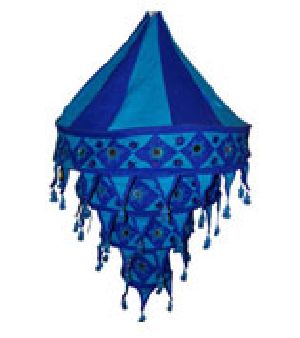
Lamp Shades
Lamp shades are a great way to not only control the lighting of the room but also to decorate it. It is in fact a cheaper option for giving your home a fresh makeover. Lamp shades also spread the light uniformly all around the room creating a dramatic ambience. With the right lighting by the lamp shade, a simple living room can turn into a hotspot for parties or a casual get together. Lamps and lamp shades come with a range of options like whether it can be hung from the ceiling, kept on a table or bed side or on the floor. There are a number of parameters than one need to consider while selecting a lamp shade. Guide to Choosing the Right Lamp Shade for your Room Lamp shades come in a variety of shapes and sizes. It is advisable to choose the one according to the size of the room and the place you wish to place the lamp shade.Another point to consider while selecting the shape of the lamp shade is the wattage of the bulb that you will be using, as it directly translates into the heat produced by the bulb. Experts’ advice having at least 2 to 3 inch gap between the shade wall and the bulb, if it is of high wattage. Compact fluorescent lights or CFLs provide a comparatively less heat generating bulb option and is ideal for tall lamp shades.In case the room is small, it is better to select a lamp shade that has enough area to withstand the heat produced by the bulb inside.The color of the lamp shade determines the amount of lighting. Dark colors emanate softer light and is ideal as a night stand or for romantic lighting. Light colored lamp shades are better for reading purposes and for lighting a large room.
...more
indian painting
The practice or process of applying a material like paint or dye to a canvas or surface is known as painting. In India, painting has a history of over 7,000 years starting on the walls of rock shelters and caves like in Bhimbhetka, Ajanta, and Ellora. Then came miniature paintings on palm leaves, which could not be preserved and, therefore, many were lost with time. But as time passed by techniques of paintings evolved into those that could be preserved. Many were even trading commodities. Archeological evidence shows that Indian paintings were sold to Arab and Egyptian traders, centuries ago. Indian Paintings can be categorized into two, on the basis of period:Classical Paintings of India were those that were patronized by the independent kingdoms in India before the arrival of Europeans. Themes revolved around Hindu and Buddhist religions, nature and the life of the rulers. Madhubani, Mughal, Rajput, Tanjore, Mysore and Pahari Paintings were major styles of classical paintings.Contemporary or Modern Paintings in India developed after the arrival of foreign traders like the British. The Bengal School of Painting was among the first school for contemporary paintings in India. Abstract painting is another style of modern art. Contemporary themes included politics, primitivism and pseudo-realism. Also seen was the western influence on classical styles of painting. Types of Paintings Indian paintings can be classified in several ways like the following:According to Region or School of PaintingEastern Indian Painting 1. Bengal School of Painting – This evolved in the early 20th century during the colonial rule in Bengal. Major painters were Rabindranath Tagore, Jamini Roy and Abanindranath Tagore.2. Madhubani Painting – It originated in the Mithila region of Bihar and is famous for its vivid shapes and use of colorful pigments on a range of surfaces including walls, floors, cloth and paper.3. Pattachitra – Orissa is the place of origin of this painting style that deals with Lord Jagannath.Western Indian Painting1. Warli Painting – It has its origins in Maharashtra among the Warli tribals. It is known for its use of distinct colors to depict their lives.2. Rajasthani Painting – Also popular as Rajput Painting, it was done in both miniatures and murals.3. Gond Tribal Painting – This style of painting is well known in the tribal regions of Madhya Pradesh and is noted for its wall and canvas paintings.North Indian Painting1. Basohli School of Painting – It has its origins in the Basohli town of Jammu and Kashmir, and was the first among the many Pahari Painting schools evolved in the later years.2. Kangra School of Painting – This school of painting originated in the Kangra Valley of Himachal Pradesh and was under the patronage of the Rajput rulers.3. Buddhist Painting – The Buddhist School of Painting in Dharamshala and Ladakh is famous for its Gompa murals and thangkas depicting the life of Lord Buddha.South Indian Painting1.Tanjore Painting – This painting style in Thanjavur is well known for the usage of gold foil to preserve the paintings.2.Mysore School of Painting – It specializes in using pigments extracted from natural sources to help preserve the quality of the picture for centuries.According to the Material, Medium or Surface used in Painting1.Wooden Painting – This painting is done on a solid piece of wood or a wooden panel using colors mixed with hot wax, egg yolk or oil.2.Oil Painting – This an old form of painting that uses pigments in oil. Oil used is extracted from linseed, walnut, safflower or poppy seed.3.Silk Painting – The silk fabric is used as the surface to paint on. Buddhists are noted for using silk to paint thangkas.4.Marble Painting – This is another surface used to paint on in India. Marble paintings are used as wall hangings, furniture and floorings that enhance the look of the room.5.Gem Stone Painting – This Rajasthani style of painting uses colorful, powdered and small cut precious and semi precious stones as painting material.6.Glass Painting – Stained glass windows are attractions of palaces and churches all over the world and also in India. This involves painting on the glass surface to produce a translucent image that looks bright when the sun shines on it.7.Phad Painting – This is a type of scroll painting well known in Rajasthan. It involves using natural dyes on about 15 feet long cloth.8.Charcoal Painting – Charcoal is used as a material for sketching or painting. This painting uses vine, compressed or powdered charcoal.According to the Techniques of Painting1.Kalamkari Painting – This 3,000 year old art form, from the state of Andhra Pradesh, deals with hand painting or block printing on cotton cloth using colors extracted from plants.2.Batik Painting – This painting involves a resist-dyeing technique using melted wax on fabrics.3.Fresco – This technique of painting is made on walls and ceilings using limestone solution as the binding agent for natural pigments.According to the Themes of Paintings 1.Religious or Spiritual Painting – One of the oldest themes for painting in India, religious painting evokes the feeling of devotion. Scenes from the lives of Lord Krishna and Buddha, and epics Mahabharata and Ramayana are popular religious themes for Indian painters.2.Figurative Painting – This is also among the oldest painting themes of India. Earlier portraits of gods and goddesses were painted. Later, figures of men and women became painting themes in the country. Figurative painting not only depicts the face and position of the human, it also captures the mood, emotion and feel of the figure.3.Mughal Painting – Prevalent during the Mughal Period in India, these are miniature paintings depicting the life and times of the Mughal rulers. The rulers used to have court painters or illustrators who painted on manuscripts to describe the writings.4.Ragamala Painting – This is a distinctive painting theme of India. It depicts the musical notations in the visual form of color and different elements. The elements represent the tone, emotion and feel of the Raga. Sahibdin is the best known ragamala painters in India.5.Landscape Painting – This comprises all paintings that involve sceneries of nature, towns and buildings. Indian artists have captured the country’s topography and towns in a remarkably realistic and graceful way. Parag Natekar, Ajay De and Rajendra Poudel are famous landscape painters of India.6.Still-life Painting – Painting of non movable objects like fruits, flowers, books, food, baskets and curtains are known as still-life painting. Subodh Gupta is a notable still life Indian painter.7.Wildlife Painting – The Ranthambore School of Art is famous for its realistic paintings of animals and birds. It was started with the view to spread the message of conservation of critically endangered wildlife species. Rahul Parekh is a well known Indian Wildlife Painter.8.Abstract Painting – Abstract painting is a visual form that is free from the constraints of pre-set shapes that we see around the world. It is part of contemporary art that is getting increasing popularity globally. Sujata Bajaj, Manish Pushkale and Gaitonde are noted abstract painters of India.
...more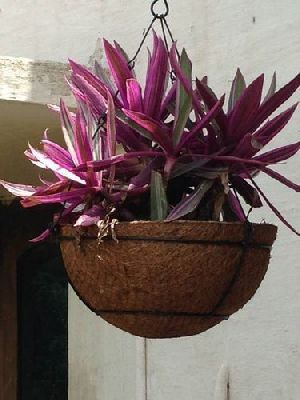
Hanging Baskets
Coir hanging baskets are made from coir fibre blended with natural rubber. Coir hanging baskets are less in weight, makes them viable for internal gardening. Plants grow faster and healthily in coir baskets. We supply Coir made Hanging baskets for planting flowering plants that add décor and beauty to your home. As per the requirement of the customer, we customize our hanging baskets. These baskets are eco-friendly and lasts for long periods of time. Coir can absorb water at a rate of about seven times its dry weight, improving the water retention of your hanging basket. Features: 1. Eco-friendly from Coco fiber.2. Easily bio-degradable.3. Used for growing indoor-outdoor small plants.4. No water leakage,exess water will drain.5. Air porous,induces healthy root growth.6. High water retention when used along with coco peat.
Color : Brown or Golden
...more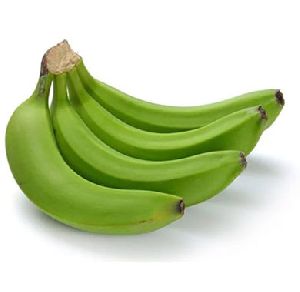
Green Plantain
We are listed at the apex in the list of Green Plantain Manufacturers, Exporters and Suppliers in Tamil Nadu. Green Plantain is stuffed in various dishes and snacks. Besides, in tropical countries, Green Plantains are eaten in raw form. In addition to this, clients can avail Green Plantains at industry leading prices. Appreciated For Purity Freshness High nutritional content Rich taste Tamper proof packaging For Making Food Items, Green Plantain Can Be Fried Boiled Backed Grilled Pickled Mashed Stuffed
...more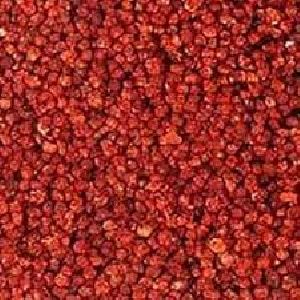
Gloriosa Superba Seeds
We are engaged in manufacturing, supplying and exporting Gloriosa Superba Seeds that are extracted form the plants of genus colchium. The Gloriosa Superba Seeds contain certain natural chemicals, colchicin & colchicoside that are being investigated for their use in anti cancer drugs. These chemical compounds are also effective against rheumatic fever, mediterranean fever and gout arthritis. We can process medium as well as bulk orders for Gloriosa Superba Seeds.
...more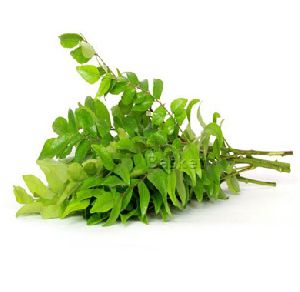
Fresh Curry Leaves
We are one of the leading Fresh Curry Leaves Manufacturers, Exporters and Suppliers in Tamil Nadu. Curry Leaf is believed to an excellent herb in ayurvedic medicines and a seasoning agent in various dishes. Curry Leaves also have high nutritional content. Besides, owing to numerous medicinal properties, Fresh Curry Leaves are extensively used worldwide. Why Our Fresh Curry Leaves? Unique aroma Aromatic taste Improves taste of the dishes Processed and packed hygeinically Benefits Increases salivary secretion Helps in improving qualities of digestive juices Relieves from kidney pains Prevents graying of hair Controls diabetes
...more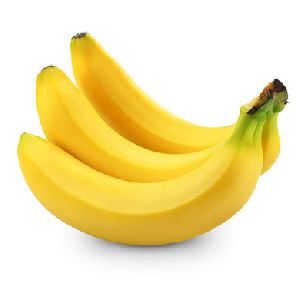
Fresh Bananas
We are a preeminent Fresh Bananas Manufacturer, Exporter and Supplier in Tamil Nadu. The Fresh Bananas offered by us are grown in the farms of the country and are high on demand in the international market. We assure that our Bananas are free from any chemical treatment and are supplied fresh. Why Buy Our Fresh Bananas? Hygienically stored Highly nutritious Free from infections Superior taste Safe and hygienic food grade packaging Excellent Source Of Zinc Potassium Fiber content Carbohydrates
...more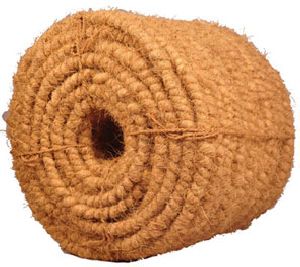
Curled Coir
Curled Coir Rope is made out of matured brown coir fibre. The curls in the coir is easily uncurable, which provides natural bouncing action for the mattress, cushions etc. Curled Coir Rope is used for various applications like making coir mattress, rubberized coir pads, coir cushions, carpet under lays, seat cushions and for insulating drainage pipes. Raw Material used to produce Curled Coir Rope is processed using sophisticated technology.
Color : Brown (we can apply any color by method of artificial )
...more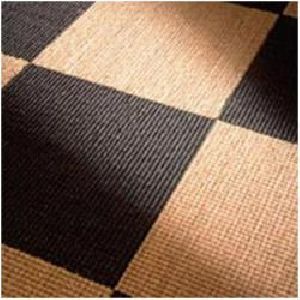
coir tiles
Mattings are cut, rubberised and finished with narrow straight edges, enabling it to be laid together to form tiles. Coir Tiles have inherent strength for durability and strength as it is made out of the strong fibres of coconut husks. Strong and eco-friendly Coir Tiles come in innovative designs so that it can make the floors look classy.
...more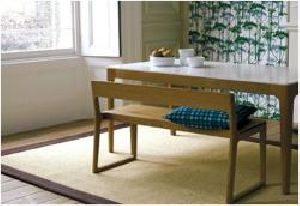
Coir Rugs
Coir Mattings cut to specified length, and suitably finished are marketed as ‘Coir Rugs’. Coir rugs are available in plain natural colour of the fibre, or in different shades, in woven patterns or printed designs. Rugs of various sizes with attractive designs are specially produced for overseas markets.
...more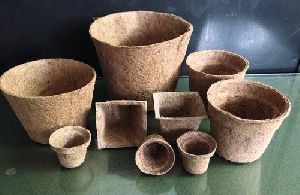
Coir Planting Pots/Baskets
Coir pots are made of natural Coconut fibre and rubber (rubberized to hold the pot together). They are produced for use in horticultural farms, flower gardens, greenhouses, and nurseries. Coir Pots are 100% eco-friendly and transforms into organic matter on decomposing. We supply Coir Pots / Baskets in various sizes according to customer needs and requirements. Features: 1. Pots remain stable above ground for a year and biodegrade in the soil after 2 − 3 months.2. Pots add texture to the soil as they degrade.3. Plants grown in these pots benefit from air pruning.4. Plant roots will grow through the pot walls, encouraging a strong root system.5. Absorbs water better.6. Moderates moisture and increase microbial activity.7. High tensile strength and lignin content.8. Environmentally Sustainable.
Color : Brown or Golden Brown
...more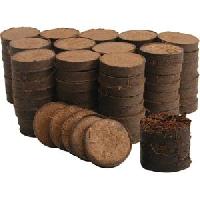
Coir Pellet
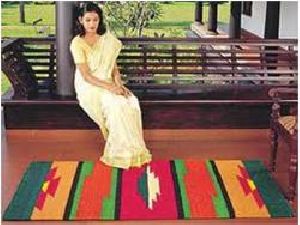
Coir Mourzouk
A carpet in coir trade is called as mourzouk. Coir Mourzouks are usually manufactured in a variety of sizes and patterns. They are mostly used for furnishing a selected area either at the centre of the room or any part of where generally the other portion might have furnished by other type of furnishing materials. They are also used for all-round furnishing.
...more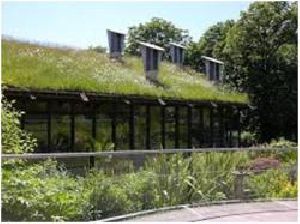
Coir Mattings for Roof Surface Cooling
Cooling of buildings by Roof Surface Evaporation is an established technology. It is an effective, simple, economical and environment friendly method of improving the indoor thermal conditions and reducing the capital and running cost of air-conditioning in the order of 60% and 30% respectively, under hot-Dry conditions.
...more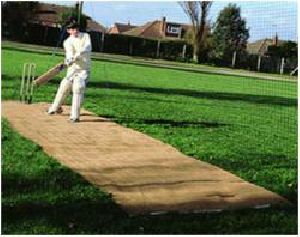
Coir Mattings for Cricket Pitches
Mattings are cut, rubberised and finished with narrow straight edges, enabling it to be laid together to form tiles. Coir Tiles have inherent strength for durability and strength as it is made out of the strong fibres of coconut husks. Strong and eco-friendly Coir Tiles come in innovative designs so that it can make the floors look classy.
...more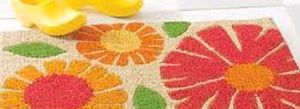
Coir Mat
Creel mats are manufactured both on handlooms and powerlooms. They are specially noted for their low pile height. The yarn for the pile structure is released from the beam in the course of the weaving process. The pile structure is obtained by suitable positioning of the coir yarn in the fabric structure with the use of grooved rods and cutting the yarn passing over the rods with a sharp knife These are available in solid shades, stripes, mottled, stenciled and also tile patterns. 2-chain creel mats and 3- chain creel mats are available in this category. 3-chain creel mats have a firmer structure than 2-chain creel mats. Special type of mats with jute twine sold under the name ‘carnatic mats’.
...moreBe first to Rate
Rate ThisOpening Hours